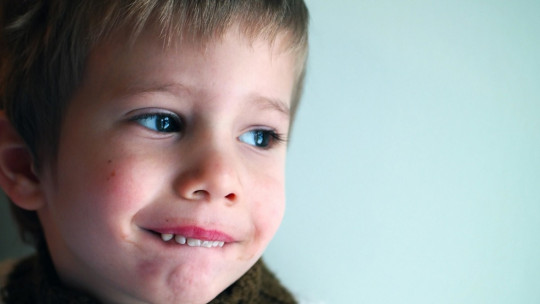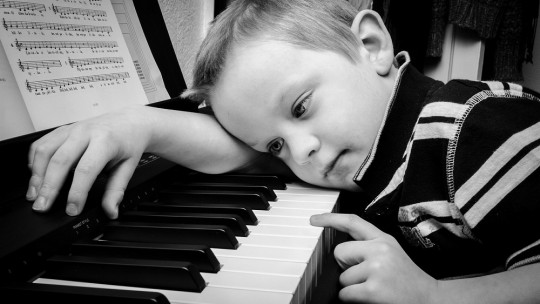
The term dyslalia refers to difficulties in pronouncing certain sounds, which can occur in children of different ages. It is, according to the new international diagnostic classifications of mental disorders, a speech sound disorder.
In this article we will see what dyslalia is, what its types and causes are, as well as some ways to carry out evaluation and treatment.
Language development
Oral language is the set of sounds that are articulated to express what we need, feel or think. It is both a behavior and a cognitive ability, and we develop it from the first years of life. Its manifestation is related to the maturation of the nervous system, specifically sensory and motor area. In itself, it is related to the emotional and social bonds that we establish, and to the development of other cognitive skills.
Artigas and García-Nonell (2008) tell us that the development of linguistic skills corresponds to the chronological age of the child. Thus, between 0 and 3 months of age the emission of monochord sounds is expected. Between 9 and 12 months, denials are understood and caregivers are named (usually mom and dad). From 3 onwards, simple questions are expected and their speech is understood by the family unit. By age 5 he can tell what happens to him and use articles; and by the age of 7, verbal fluency and the use of conjunctions is expected.
Nevertheless, It may happen that in some cases chronological age does not correspond to language development, that is, not all children acquire the same skills at the same time. For example, some children may begin to understand what people tell them, but have limitations in explaining themselves. It may also happen that children express themselves verbally slowly, or with little fluency, or it may happen that they express themselves so fluently that their language is intelligible. Likewise, among the possibilities that are included within the development of language is what we have called “dyslalia”.
You may be interested: “Bradilalia: what it is, causes, treatment and associated symptoms”
What is dyslalia?
The word dyslalia comes from the Greek “dys”, which means “difficulty”; and “lalein” which means “to speak.” Is about a difficulty producing certain sounds or groups of sounds in the manner deemed appropriate. It can be detected, for example, when a child frequently resorts to omitting a certain sound through silence or vocal lengthening. Or if the child always replaces the same sound with another similar one, this is a case of substitution.
Likewise, it can become visible through distortion, that is, when the child frequently resorts to emitting an approximate sound, but which is not the one that fits with his conversation. Finally It may happen that the child inserts a sound as support
Recent international definitions
The term “dyslalia” has recently been displaced from international classifications of mental disorders, however it continues to be used in everyday and specialized language to refer to the phonetic difficulties that some children present
For its diagnosis, the DSM-V considers the latter no longer as “dyslalia” but as a “Speech Sounds Disorder” (TSH). It is a set of central alterations typical of the phonological component that occur at the level of the pronunciation of some phonemes.
6 types and causes
Although classifications may vary, according to Aguilar-Valera (2017); Hernández and Rubalcaba (2017), there are the following types of dyslalia: physiological or evolutionary, organic, phonological, functional and mixed. Likewise, dyslalia can be divided according to the difficulty in specific pronunciation.
1. Physiological or evolutionary
Developmental dyslalia is considered to be the case in which the child does not repeat by imitation those words he hears, even though their development and chronological age is considered appropriate for this. Its development is therefore due to a certain maturation of the brain and the speech apparatus. It usually occurs around 4 years of age and becomes visible due to phonetically incorrect repetition.
2. Organic
It is a functional type of dyslalia when the articulation is related to the peripheral organs that control speech. In this case the children they most frequently use substitution the omission or distortion of the sound expected to be pronounced.
3. Audiogenic
As its name indicates, it is dyslalia that It is a consequence of a hearing impairment
4. Functional
It results from the functioning of the Gnostic recognition system and the practical production system, so its etiology is related to the development of cognitive processes
5. Mixed
As its name says, a mixed dyslalia is one in which the manifestations of the previous types occur simultaneously.
6. According to pronunciation
In accordance with the specific difficulties for pronunciation according to the alphabet, Peña-Casanova, 2014 (cited in Hernández and Rubalcaba, 2017), tells us that dyslalia can be divided as follows:
Possible causes, evaluation and treatment
Dyslalia has a multicausal development and course. That is, it is caused by the presence of different elements, among which there may be a certain organic function, and also a parenting style that is not favoring fluency in language and communication.
can be evaluated via Glatzel Test, which takes into account nasal patency and phonoarticulation; or by the Rosenthal Test that considers the respiratory mode. It is also important to carry out qualitative evaluations based on the observation of the expression and reception of speech, so that communication support needs are determined.
Treatments include speech therapy and muscle exercises necessary for articulation: lips, tongue, palate, tonsils, frenulum. The same exercises include activation of the nasal and oral apparatus, and it is important that they are planned with a certain frequency and rhythm, in accordance with the needs and zone of proximal development of the child. Otherwise, far from favoring its development, it can hinder and cause impatience or manifestations of anxiety.
To determine an appropriate treatment, it is important to begin by knowing the causes of dyslalia as well as the immediate needs of both the child and the family or those closest to them.








